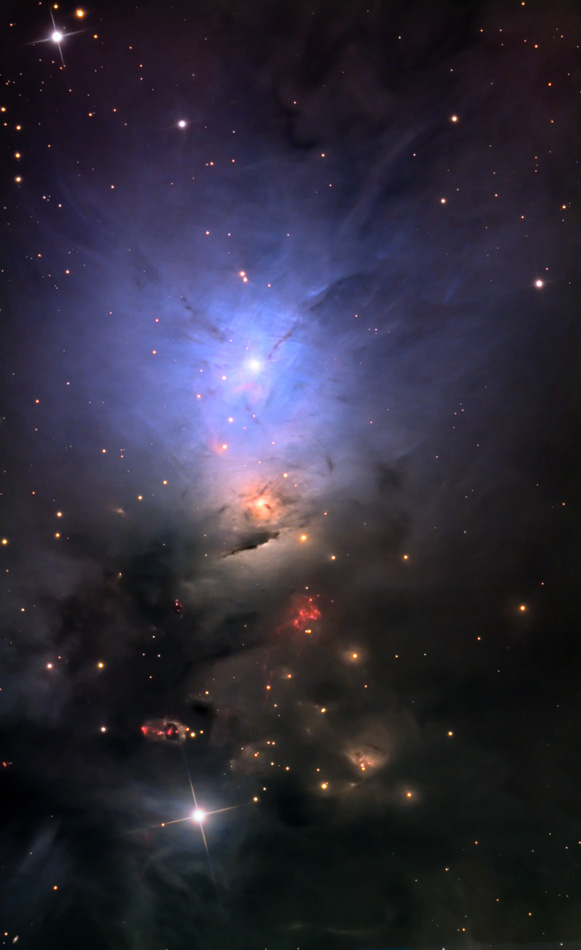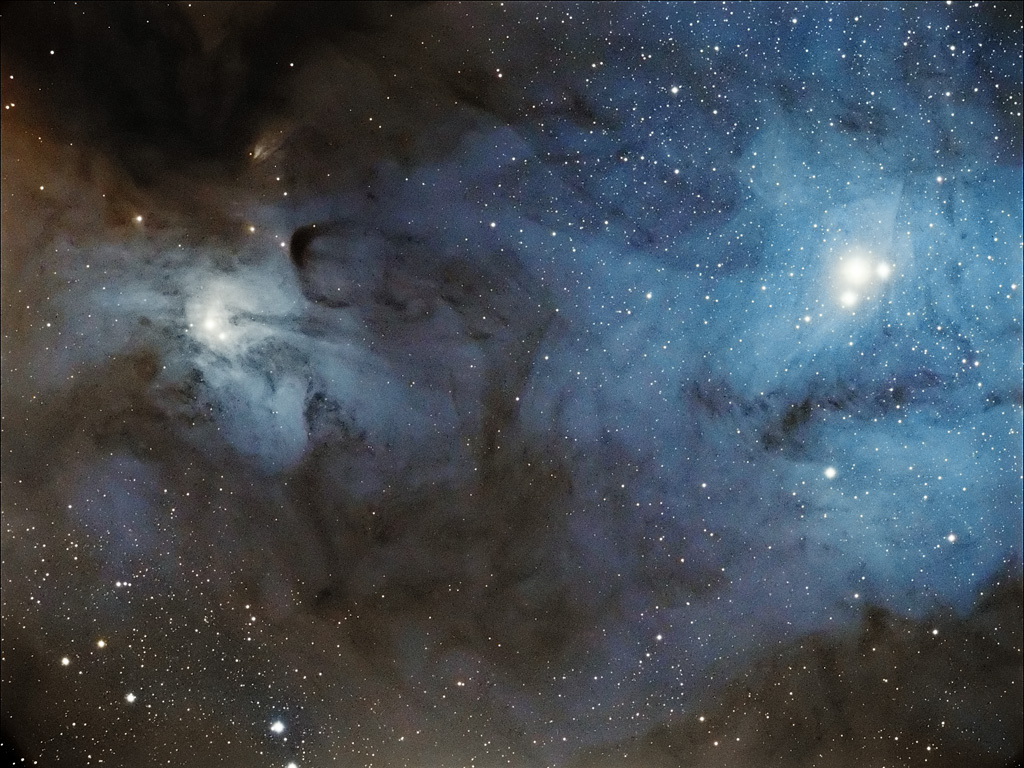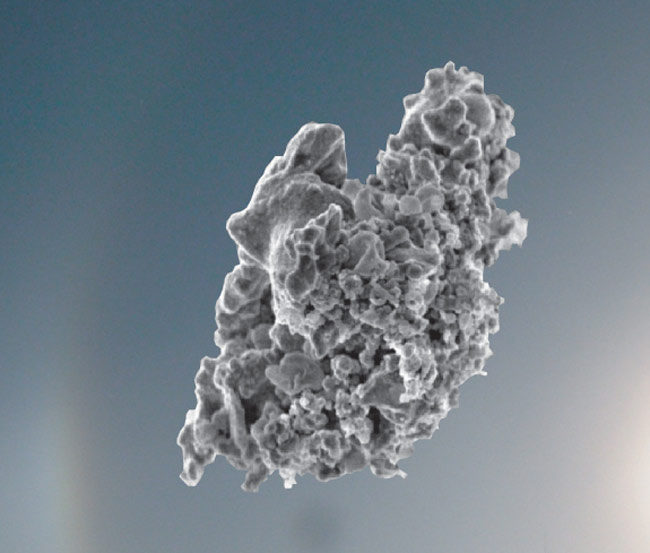I've never taken much - or really any - interest in NGC 2170, but it does look spectacular! Let's compare it with NGC 1333:
NGC 1333 is a typical low-mass site of star formation. The dominant color is blue, which is being scattered off the brightest star, BD+30 549, which is spectral class B8V or B9V. This star is blue and reasonably hot, hotter and more massive than Vega or Sirius. It's probably around three solar masses and around 11,000 or 12,000 K. Hot, but no cigar. This star is completely unable to ionize a red emission nebula, but it can indeed light up a blue reflection nebula.
Note the little red blobs and squiggles in the NGC 1333 picture. They are Herbig-Haro objects, jets from newborn (or even unborn) stars.These jets are indeed red from hydrogen alpha emission, because they are ionized as they slam into the surrounding nebula. But you can see how small they are. Note, too, that the dust seems reasonably "undisturbed".
NGC 2170 is clearly a far more violent site of star formation. It forms stars of quite high mass, compared with the low mass stars of NGC 1333. There are stars in NGC 2170 that are more than 20,000 K and possibly more than ten solar masses. This high mass star formation leads to a lot of turmoil. Just look at that dust that seems to be "exploding" out of the nebula center! And look at all that large-scale red hydrogen alpha, Hα. Where does it come from?
Let's look at two nebulas, one that is "just sufficiently ionized to be red", and one that is "just sufficiently un-ionized to be all blue"! I'm talking about the red Cocoon Nebula and the blue Rho Ophiuchi nebula:
The point I wanted to bring home here is that the dividing line between stars ionizing a nebula and stars merely illuminating a nebula goes between spectral classes B1 and B2. Stars of spectral class B1 and hotter ionize a red emission nebula, but stars of spectral class B2 and cooler will typically just illuminate a reflection nebula.
There are exceptions. Star AE Aurigae, of spectral class O9.5V, is ionizing the Flaming Star Nebula and making it glow red. Yes, but there are also tendrils of blue reflection nebulosity scattered across the face of the red nebula:
The reason why there are blue tendrils in the red Flaming Star emission nebula is because there are filaments rich is dust particles in that nebula. The reason why the overwhelming number of red emission nebulas don't have these tendrils of reflection nebulosity is that the hot stars that ionize the nebulas "cook the dust particles to a smaller size", as astrophotographer David Malin once put it, by destroying their icy mantles. That way the particles become too small to scatter visible light.
And the reason why some of the dust in the Flaming Star Nebula has not been destroyed by AE Aurigae is that the star is a speeding runaway stellar sibling which has just blundered into a cloud of gas and dust that it has ionized and lit up. AE Aurigae is passing by so quickly that it hasn't had time to boil away all the icy mantles of all the dust particles in the Flaming Star Nebula.
Let's return to NGC 2170:
Note the nebular patch at upper left, which is both red and blue. The central star of that patch, HD 42004, is spectral class B1.5V. I guess this star is just barely hot enough to ionize a bit of hydrogen alpha, especially if you take into account all the other relatively violent forces going on in this high mass site of star formation. But HD 42004 is certainly also creating its own reflection nebula, hence the combination of red and blue light.
The hottest star inside the entire NGC 2170 region of star formation appears to be the star inside the brightest patch of nebulosity at upper right, BD+46 3474, which is spectral class B1V. This star
is hot enough to ionize a red emission nebula. So why is the bright nebula surrounding it all blue? Well, maybe because the star hasn't had time to boil away all the icy mantles of all the dust particles that seem to form a thick soup around the star?
But look at the large red patch at lower center-left. It is red from hydrogen alpha. What's it doing there? I haven't found another B1-type star here, let alone a star that is even hotter. But maybe the dust has cleared a bit here, letting the red hydrogen light that has been ionized by star BD+46 3474 shine through? Remember that hot stars, and BD+46 3474 is at least reasonably hot, cook away the icy mantles of dust particles and make them smaller. So shouldn't those shrunken dust particles scatter shortwave ultraviolet light rather efficiently, the ionization source of hydrogen alpha?
Also, who knows? There is a dark orange-brown dust patch at upper center. Maybe a really massive and ultraviolet star is forming inside that patch, something more massive and more ultraviolet than BD+46 3474?
James Webb, where are you? We need you to take a look at NGC 2170 to see what is really going on in the dust clouds lurking there!
Ann
 NGC 2170: Angel Nebula Abstract Art
NGC 2170: Angel Nebula Abstract Art











